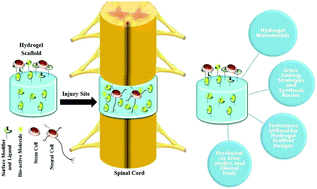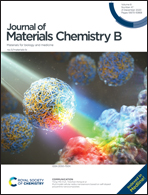Design of hydrogel-based scaffolds for the treatment of spinal cord injuries
Abstract
Spinal cord injury (SCI) is a traumatic lesion that diminishes sensory and/or motor neuronal functionality, directly affecting the quality of the patient's life. Due to the central nervous system's (CNS) inhibitory microenvironment that presents challenges in neuron repair and regeneration, tissue engineering strategies have received significant attention to improve the quality of a patient's life. In this regard, hydrogels are attractive SC scaffolds as they can provide not only an adjustable physiologically native-like microenvironment but also an appropriate matrix for cell delivery, drug delivery, and other bioactive molecule delivery at the lesion site. This systematic review characterizes the widely used biomaterials including natural polymers; protein- and polysaccharide-based synthetic polymers; methacrylate- and polyethylene glycol-based, and self-assembling (SA) peptides. In addition, synthesis routes of hydrogels are investigated. This review is complemented by the discussion of the various techniques utilized for hydrogel scaffold designs with their in vitro and in vivo outcomes and clinical trials. The existing challenges and opportunities for SC hydrogel scaffolds are mentioned towards the end of this review.

- This article is part of the themed collection: Journal of Materials Chemistry B Recent Review Articles


 Please wait while we load your content...
Please wait while we load your content...